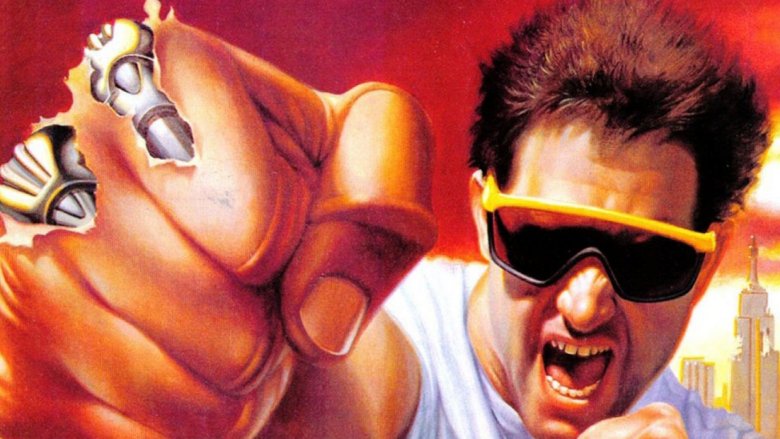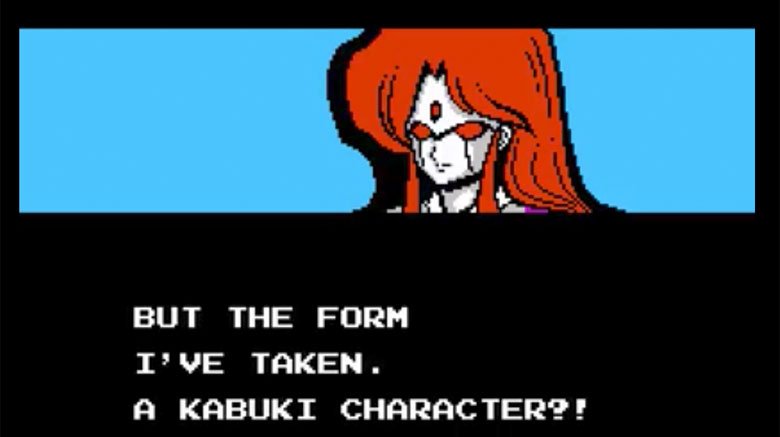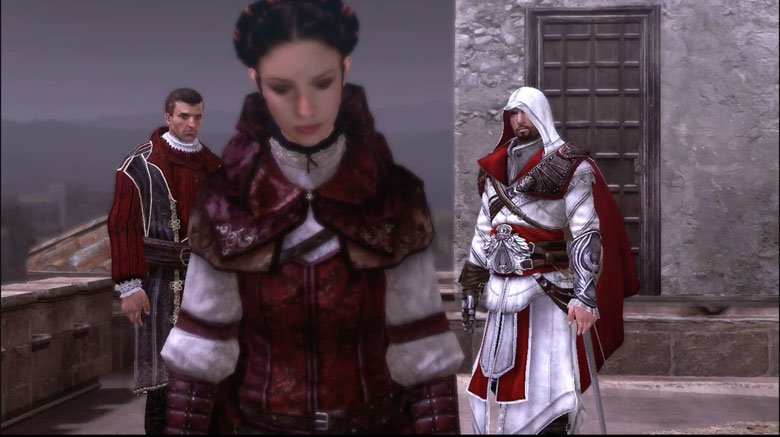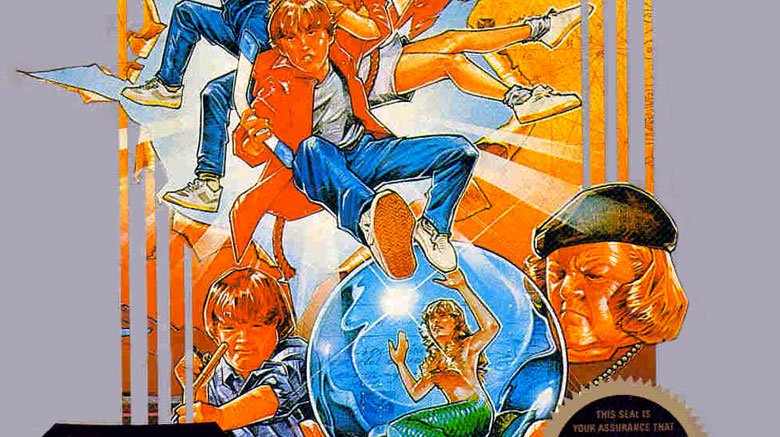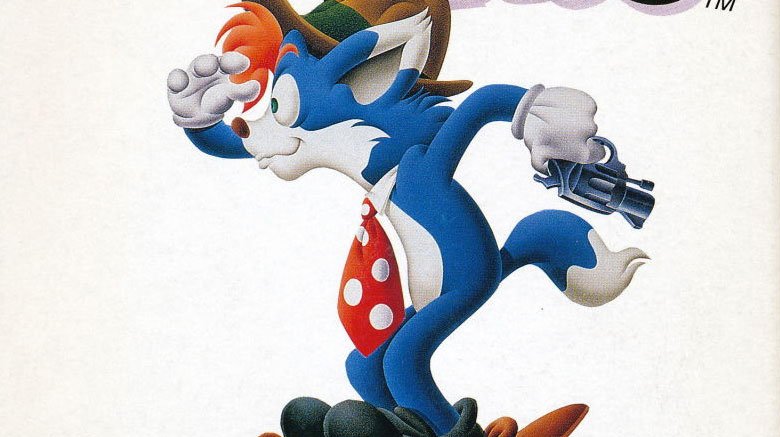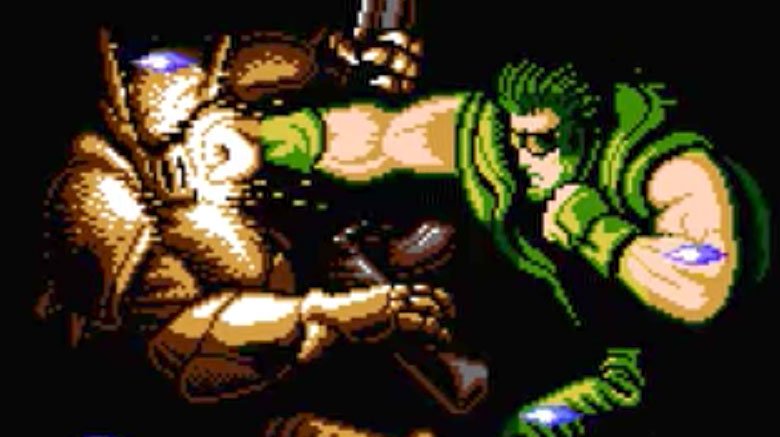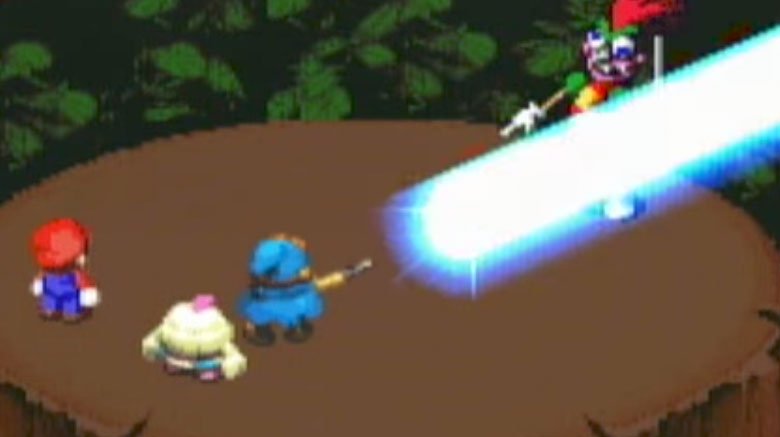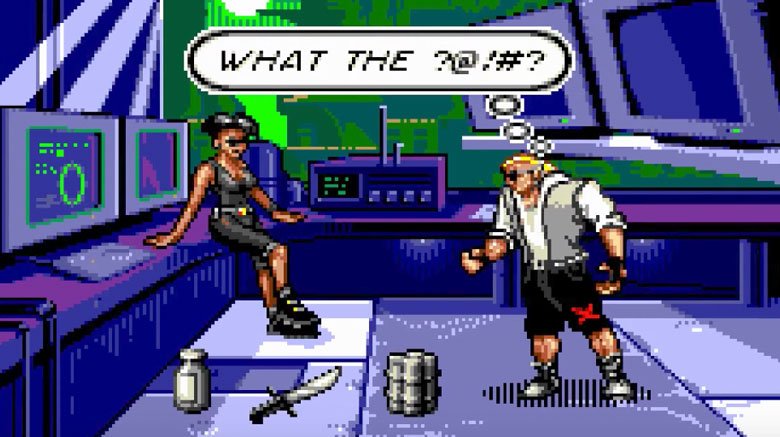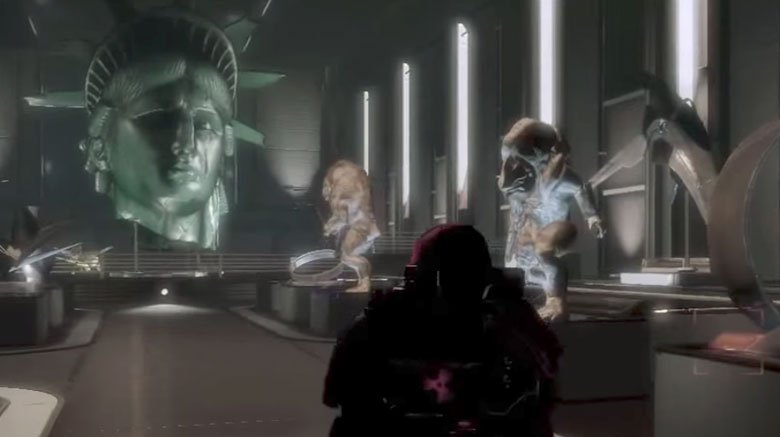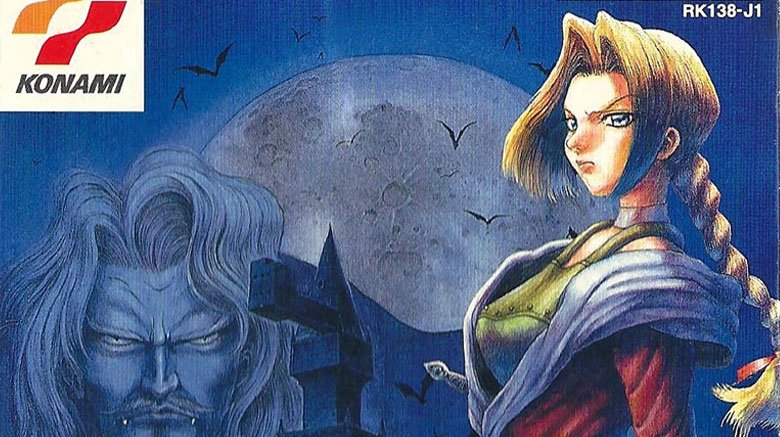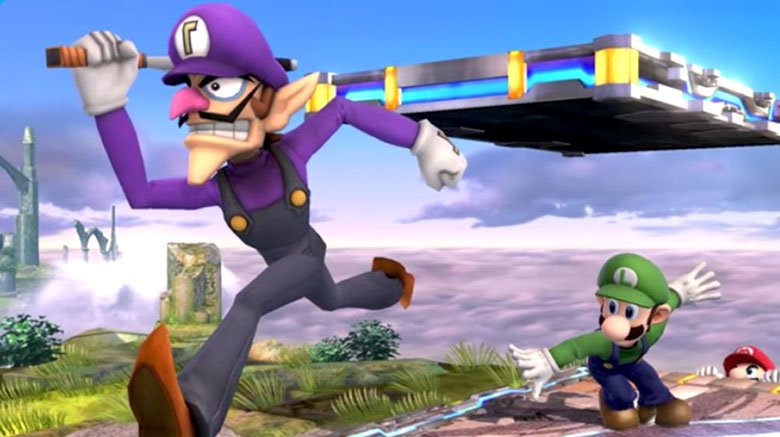Video Game Characters Who Fell Short Of Their Potential
Ever since Pac-Man chomped his way onto the screen and introduced players to the truly bizarre concept of a very hungry circle inexplicably beset by ghosts, video games have thrived on characters. Mario, Sonic the Hedgehog, Lara Croft, and more recent introductions like Commander Shepard or the cast of Overwatch have connected gamers to the action and storylines in ways that have made them worldwide icons.
But while those are certainly the best known, there are plenty of video game characters that are just as good—or maybe even better—that somehow never lived up to their potential. From the 8-bit era to the modern day, they're the characters we would've loved to see more from, even if we never will.
Colonel Scott O'Connor (Kabuki Quantum Fighter)
On one level, the plot of 1990's NES classic Kabuki Quantum Fighter is years ahead of its time. It's like The Matrix meets War Games, set in 2056 and focused on a sentient computer virus that's threatening to take over a stockpile of nuclear weapons and destroy the world, which can only be fought by using experimental technology to digitize your mind and send it into the network. There's even a thriller element to it—the technology is so new that no one in the real world is quite sure what form a person's consciousness will take once it's digitized.
But on another, more memorable level, it doesn't take long for that story to veer hard into the kind of complete, mind-blowing weirdness that defined the NES era. Before the game's opening cutscene is over, we're introduced to Colonel Scott O'Connor, a soldier who volunteers to jack into the digital world and ends up manifesting a new body as a fully costumed Kabuki dancer who can defeat enemies by whipping his hair back and forth like a more lethal Willow Smith.
The only explanation we get is that O'Connor's grandfather was a Kabuki performer named Danjuro, but beyond that, we're pretty much left to confront this inexplicable world on its own terms. We're all for narrative economy, but there's definitely more to that story than we actually got, if only the parts about how O'Connor managed to become a full colonel at the age of 25. Then again, going into a mysterious virtual reality device, inhabiting the body of an ancestor, and developing dubiously lethal skills is pretty much the plot of every Assassin's Creed game. Maybe they were stealth Kabuki Quantum Fighter sequels all along!
Claudia Auditore da Firenze (Assassin's Creed)
Assassin's Creed has taken a really interesting approach to its cast. While the main characters might be completely fictional, most of the other people in the world around you are actually drawn from real-life historical figures, something that starts to get pretty weird right around the time you're having a fistfight with Pope Alexander VI in the secret spaceship room underneath the Vatican.
But while there are plenty of characters who make up some truly incredible stories, there are also a couple of missteps, and none of them feel bigger than Claudia, Ezio Auditore's long-suffering sister. While Ezio was the star of a trilogy of games—Assassin's Creed II, Brotherhood, and Revelations, arguably the high point of the franchise—Claudia had a story that played out entirely in the background, built entirely on the idea that she wanted to move past just managing the family's finances and become an Assassin herself. Eventually, in Brotherhood, that's exactly what happens, but then... well, nothing.
Even the cutscene where she's inducted in the order is more focused on Ezio and Machiavelli, and after that, she's pretty much absent from the rest of the plot. The storyline reason for this is that she's just the first step in Ezio rebuilding the larger Brotherhood, but the fact that we never really get to see her in action is a huge waste of potential.
Annie the Mermaid (Goonies II)
If you weren't a child in 1987 who was obsessed with The Goonies and its story of long-lost pirate treasure and murderous criminals pursuing children through a string of deathtraps, it's doubtful that we can even begin to explain the mixture of confusion and hope inspired by the very existence of The Goonies II. We had questions, folks: Was this a game that adapted a sequel to the movie that we just somehow hadn't seen? Did it continue Mikey and the gang's thrilling adventures, the ones that were only hinted at with that attic full of museum pieces in the first movie? And, perhaps most importantly, why the hell is there a mermaid on the box?!
Eventually, we got the answers to the first two—no and sort of, respectively—but that third one remains a mystery to this day. See, while the title of the game was misleading, it was actually pretty accurate, too: The Goonies II was the sequel to Konami's video game adaptation of the first (and only) Goonies movie. And as was the case with a lot of sequels, Konami decided to add some new elements in to spice things up a bit. Mikey, for instance, was armed with a trusty yoyo and a boomerang despite never even touching those things in the movie.
And then there was Annie the Mermaid. The ultimate goal of the game was to rescue her from Ma Fratelli and the Twins, and that is the sum total of information you're given about where she came from and why she's hanging out with a bunch of kids in Oregon. And look: the line between "pirate treasure" and "actual for real mermaid" isn't so far that we can't see how whoever wrote this story got there, but if the Goonies are going to meet actual mythical creatures, then that's something we should probably hear a little more about.
Willy the Rockin' Kat (Rockin' Kats)
A good character design can take a game pretty far, especially if you're looking to build a franchise around a mascot. Just look at the success of Sonic the Hedgehog, or Kirby, or hell, even Crash Bandicoot, who starred in 18 games despite essentially being John Cena's fursona. Stacked up against them, Willy the Rockin' Kat doesn't really seem all that weird.
Admittedly, he appears on the cover of his first (and only) outing holding a surprisingly realistic snub-nosed revolver, but that just means he's a few years ahead of Sonic. Besides, it eventually turned out that it was just a "punch gun" that shot a giant spring-loaded fist at his enemies and allowed him to jump extra high by aiming it at the ground.
Gunplay aside, what really made Willy work was that the game was structured as though Willy was already a cartoon character we were meant to be familiar with, with the game's levels—fun little twists on different genres like a New York street, an Old West town, and even a biplane dogfight—selected as though they were channels on a TV set. The overall effect was that WIlly comes off as a lost Looney Tunes character who just happens to pack a pistol and have a peril-prone lady friend, and that's a concept that should've gotten a little more exploration.
Steve Hermann (Shatterhand)
1991's Shatterhand has one of the single best premises of the 8-bit era, mostly because it's basically RoboCop with more punching. Steve Hermann is a cop in the not-too-distant future of 2031 who goes up against a criminal organization with the overwhelmingly badass name of Metal Command, and ends up losing both of his arms in the process. Fortunately, the Law and Order Regulatory Division—yes, the good guys are called L.O.R.D. in this game—was able to outfit him with a sweet vest, the most early '90s sunglasses in existence, and what Nintendo Power described as "cybernetic super hands, capable of shattering metal on impact."
You know, on second thought, we probably don't need to explain anything else here. The game's called Shatterhand; you can probably figure out everything you need to know just from that.
Seriously though, if there was any justice in this world, Shatterhand would've spawned a franchise that gave us at least nine games, each built around an increasingly complex problem that could only be solved by punching. Unfortunately, the original game, while perfectly fine, never really caught on, presumably because super-strong punches aren't all that impressive in a medium where an average mustachioed plumber can shatter brick walls with his head.
Geno (Super Mario RPG)
1996's Super Mario RPG: Legend of the 7 Stars is a genuine masterpiece, a sprawling, epic adventure that took Mario into a whole new genre. Despite influencing multiple games that came after, it's never had a direct sequel—and while it's easy to argue that it doesn't really need one, that also means that we've never gotten to see more of Geno, who was created specifically for this game and never made his way into another one.
It's worth noting that we never really got to see more of Prince Mallow, either, but that doesn't seem like quite as big a missed opportunity. He is, after all, just a fluffy cloud with arms, a face, and dubious fashion sense, while Geno is a spirit who descends from heaven to inhabit the body of a doll, turning it into what is essentially a wooden cyborg that battles the forces of evil with laser beams and rocket fists. And he has cool hair.
Geno was unquestionably Super Mario RPG's breakout character, but since he was owned by Square, the company behind Final Fantasy that developed the game under license from Nintendo, he's never actually shown up again outside of a few heavily qualified references. And honestly, considering that the Mario franchise put Petey Piranha into like 46 games despite the fact that he's a giant angry flower in polka-dot underpants that nobody actually likes, that seems a pretty huge missed opportunity.
Sketch Turner (Comix Zone)
In the mid '90s, game store shelves buckled under the weight of side-scrolling beat-'em-ups. The success of titles like Final Fight, Streets of Rage, and 8-bit predecessors like River City Ransom and Double Dragon led to a massive amount of games that applied that same "walk right, punch people, walk right again" style to virtually every subgenre you could imagine—and it worked out especially well for superheroes. Spider-Man, Batman, the X-Men, the Avengers, even Superman—they all had some games built around that same idea.
In 1995, however, Sega took things to the next level with Comix Zone. Rather than focusing on a comic book character, Comix Zone introduced us to Sketch Turner, a freelance comic book artis who was so '90s cool that the first time we see him, he's drawing comics while wearing those round John Lennon sunglasses. Indoors. At night. Oh, and he's also a part-time rock 'n' roll musician, just in case his ponytail wasn't enough to let you know how rad he was.
Needless to say, Sketch got sucked into his own creation in an effort to keep the villain he created from escaping into the real world. The big gimmick of the game was that rather than just being straight left-to-right street fights, each level was structured like a comic book page, with Sketch flinging himself around panel borders—an idea so good, Sega was awarded a patent for it. Sure, Sketch himself might've been Poochie-esque in his relentless coolness, but now that superheroes and comics are back in the spotlight, isn't it about time he made a comeback?
Donovan Hock (Mass Effect 2)
One of the best things about Mass Effect 2 is that it's a game that literally rewards you for finding out more about its characters. Sure, the original game had plenty of interesting companions and a difficult choice about who you liked the least out of your crew, but the 2010 sequel put the success of the final mission on whether you'd completed enough missions to earn your crew's loyalty, going deep into their histories and learning more about them in the process.
The same idea was in effect for the "Stolen Memory" DLC, which introduced master thief (and extremely thirsty sit-up watcher) Kasumi Goto, who required Commander Shepard to take her on a mission that was essentially Ocean's Eleven in space. It's a great idea, but one of the best parts is the introduction of Donovan Hock, the unimaginably wealthy collector in desperate need of being robbed.
Hock himself appears pretty briefly as more of a walking McGuffin than a character, but his collection of stolen artifacts begs to be explored. This is a dude who owns the severed head of the Statue of Liberty, a battle-damaged future version of Michelangelo's David, and a petrified creature from another dimension—a monster from Bioware's own Dragon Age games. Not everything needs to be explained, but if there was a game about pulling off daring interdimensional heists in the Bioware Multiverse, you can be damn sure we'd want to play it.
Sonia Belmont (Castlevania Legends)
The saga of the Belmont clan's endless war against Dracula has weaved its way through almost thirty video games, creating a timeline only rivaled by The Legend of Zelda in its complexity, full of bizarre side branches that attempt to explain why a magic whip is the only thing in the world that can truly (and temporarily) defeat the lord of the vampires. With that in mind, it's no surprise that there have been at least three attempts to provide the series with an origin story.
The first and most interesting came in In 1998, at the end of the Gameboy's shockingly long lifespan. Castlevania Legends—known in Japan as Dark Night Prelude, keeping the musical-themed titles popularized by Rondo of Blood and Symphony of the Night—was built around Sonia Belmont. Not only was she the franchise's first female lead, she was also the matriarch of the entire family, with connections to Dracula that explained why her bloodline was bound by eternity to his.
Unfortunately, the game paled in comparison to its higher-end cousins, and was even referred to as "an embarrassment" by Castlevania producer Koji Igarashi, who went as far as removing it from the official timeline due to conflicts with the existing mythology. As for Sonia, she was planned for a second appearance in Castlevania: Resurrection, but that game ended up being canceled and the series wouldn't feature another woman in a lead role until 2008, right before the franchise was rebooted with another origin and then subsequently abandoned by Konami.
Waluigi
Waluigi might not seem like a great fit for this feature. Since his debut in 2000's Mario Tennis for the M64, he's appeared in more games than everyone else on this list combined. And yet, stop for a second and think about what you really, truly know about Waluigi, and you will likely find that you know nothing. No one does. And even fewer want to.
Seriously, we once spent an hour trying to figure out how old he was supposed to be, and whether or not he was actually related to Wario, and only found more questions. He's a reflection of a reflection tied to another reflection, a funhouse mirror given terrifying life who exists for the sole purpose of trying to keep Mario and Luigi from winning at tennis. The sheer amount of questions this raises about both Waluigi himself and the universe he inhabits is staggering, and threatens to shatter our illusion that we truly know anything.
Waluigi has fallen short of his potential. Waluigi cannot, in fact, live up to his potential, because his potential is truly—and terrifyingly—infinite.

